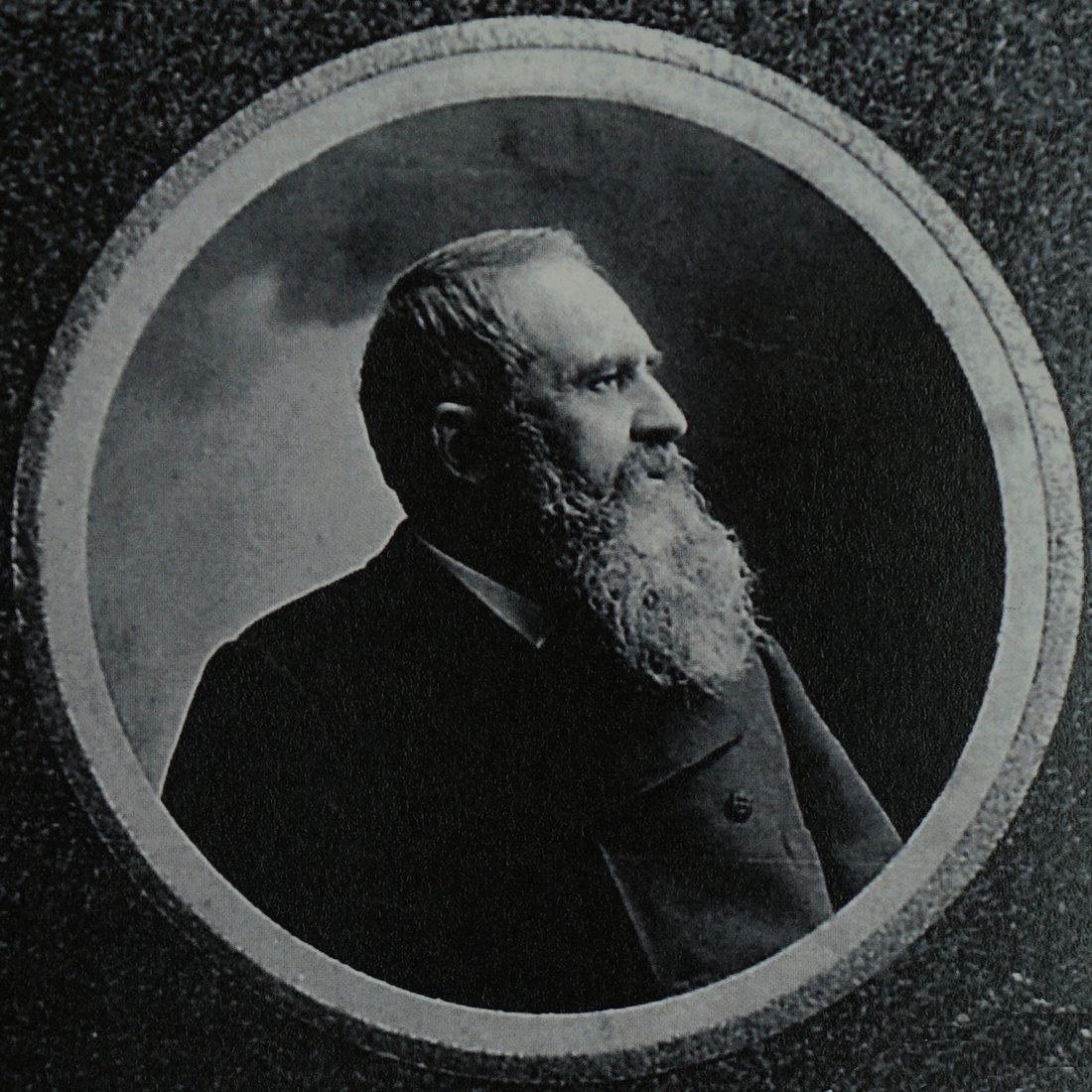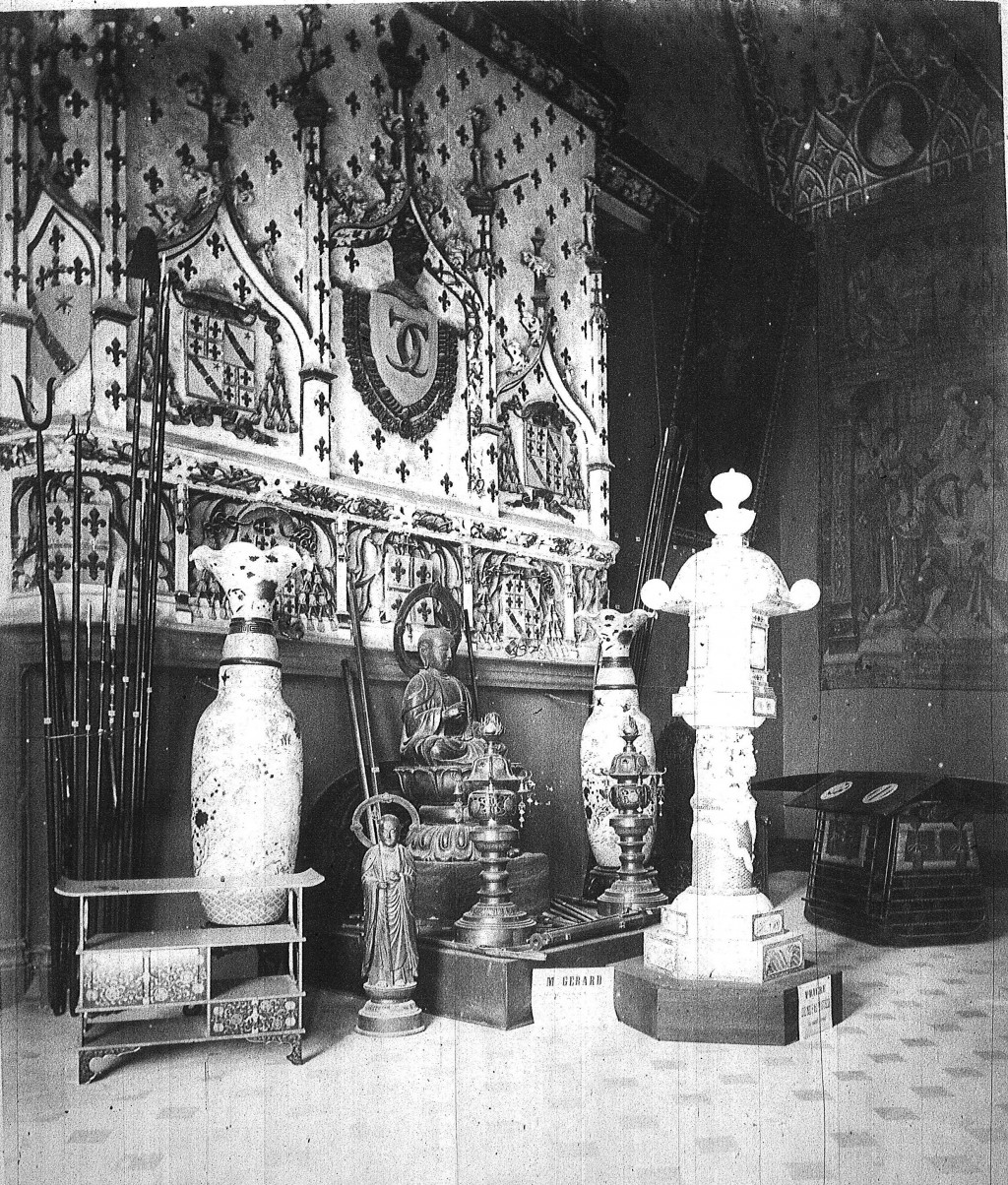
GÉRARD Alfred (EN)
Biographical article
Alfred Gérard was born in Reims on March 23, 1837. Both his parents were bakers. He spent his childhood between his hometown and two surrounding villages, Lavannes and Bezannes, where his ancestors were farmers. He started working at a very young age with a manufacturer of fabrics and wools in Reims. No one could predict that his uncle, then a wine merchant in Cumières, would encourage him to travel abroad to learn languages and trade. On February 18, 1859, Alfred Gérard obtained a foreign visa and arrived in Yokohama as a representative of an English tea brand at a time when Japan was just opening its doors to foreigners. He was the 32nd foreigner to enter into the country and the first Frenchman (Guyard, 2000).
Yokohama was only a modest fishing port then, with earthen and wooden houses covered with thatch. The first years were difficult for him, because the Japanese stubbornly refused to acknowledge the presence of foreigners. Alfred Gérard was listed in 1863 as a grocery and wine wholesaler importing from France and thus introducing champagne to the Japanese (Guyard, 2000). He then opened a butcher's shop in Chinatown, in a country that did not consume red meat, to feed a growing European population. He also bought land, on which one had springs. He decided to dig a well there and sell the water to the Navy for boats docking in the bay; an idea which turned out to be very lucrative. This water was known to be particularly pure which enhanced the reputation of the port of Yokohama. All the boats used it. On another piece of land, he built his own buildings in the European “hard” style. Orders flowed in leading to him manufacturing artisanal tiles and bricks. These tiles even won a prize at the l’Exposition de beaux-arts et d’industrie de Paris in 1884 and were the first to appear in Japan. The bricks were widely used by the architect Paul Sarda, who partially rebuilt Yokohama, including the famous "bluff", a district reserved for foreigners. Yet, part of the city disappeared (with its bricks) during the earthquake of 1923.
Alfred Gérard was fascinated by the beauty of the landscapes and the works of art he discovered and educated himself to understand the history of the country. As Japan changed its political regime, he became passionate about acquiring art objects as well as everyday objects, characteristic of the Japanese lifestyle of that time. On his return to France in 1878, at the age of 41, he multiplied his activites which were all related to agricultural. In 1879, he installed a library dedicated to the agricultural and scientific world in his house at 15 rue Chanzy in Reims. The collection contained 25,000 books and was open to scientists and scholars. Childless, he bequeathed his rich Japanese collection to the City of Reims between 1891 and 1905 (Guyard, 2018, p. 20-24).
In 1904, at the age of 67, he moved to the retirement home on rue Simon in Reims. He lived there for 10 years, during which he continued to manage his property, share his knowledge and write his will. Although he never overlooked his family he designated a foundation as sole legatee, the Alfred Gérard Foundation, which still exists to this day and continues its work through the Cercle Agricole Rémois (MSRR, s.c. ). On March 19, 1915, he died in the bombing of his retirement home. His precious library was also bombed but methodically rebuilt by his executors (MSRR, s.c.). Alfred Gérard is buried in Bezannes, under a monument in the shape of a tori. If he is still honored in Yokohama, it is only in recent years that he has received the well-deserved recognition from his hometown.

The collection
During his stay in Japan between the years 1860 and 1878, Alfred Gérard brought together, a considerable collection of object d’arts and daily life from Japan, and, to a lesser extent, from other regions of the Far East (Korea, China, Indochina, Java, Ceylon). Childless, he decided to bequeath his collection to the City of Reims in four installments (May 1, 1891, November 30, 1897, January 17, 1898 and February 1905). With more than 2,000 items, it constitutes the heart of the Japanese collection of the Musée Saint-Remi in Reims. The collection also took an ethnographic approach. The objects brought back by Alfred Gérard showcase the upheavals that Japan experienced between the end of the Edo period and the birth of the Meiji era. In addition, the end of the samurai, the crisis of Buddhism and the changes in lifestyles resulted in an influx of traditional objects on the market due to their lack of usefulness and their symbolic value. At the same time, objects that were produced for export to the West (bronzes, ivories, ceramics, etc.) continued to be developed, which Alfred Gérard also acquired extensively.
These diverse objects, dating mainly from the 18th and 19th centuries, were cataloged by Alfred Gérard in a booklet which he gave to the curator of the Henri-Jadart Museum in 1896 and annotated by him to specify the provenance or specific interest of some of the works. Alfred Gérard took a particular interest in samurai armor. He brought back some 200 weapons and pieces of armor from his stay demonstrating his interest in the subject. He seems to have made a point of illustrating the large choice of Jamapnese warrior armor, without neglecting objects: sabers, spears, body defenses, horse harness, bows and arrows, firearms, textiles. .. (Guyard, 2018, p. 20-24).
The ceramics illustrate the diversity of Japanese workshops that produced for export, sometimes including the acquisition of spectacularly sized vases. Everyday objects and furniture mostly in lacquered wood: furniture, boxes, crockery, scale models for a dolls' party, but also an imposing wedding palanquin, are rare objects in French collections. This illustrates the Japanese craftsmanship, both for wealthy Japanese families and Westerners. Other objects are in bronze, such as ikebana vases or incense burners decorated with animals which were all available in shops in Yokohama. Scale models of monuments, musical instruments, headdresses, fans and other objects illustrate the daily life of the Japanese in the years 1860-1870.
Religion is represented by bronze furniture from Buddhist temples, in particular a large Buddha from 1760 as well as “house chapels”, offering shrines and some wooden sculptures. Alfred Gérard also bought many graphic works, painted rolls and nearly 800 individual prints in albums. He also bought geographical maps, calligraphy albums or tourist books, including eight volumes depicting the route to Nikkô, the holy city of Japan, (Guyard, 2018, p. 20-24).
A numismatic set made up of manuals and trays presenting copies of nearly 900 Japanese coins was donated in 1905. Alfred Gérard did not, however, take any particular interest in ivories (netsuke or okimono), and thus are not represented in the his collection. Despite the research carried out, it has impossible to define the places where Alfred Gérard found the objects for his collection. Only one piece, a small screen in red lacquer, bears a "Le Bon Marché" label. Overall the entire collection was acquired directly in Japan, from local dealers or merchants. It is possible that a few other works, whose provenance is no longer identified today, were purchased by Alfred Gérard in the "exotic" sections of the department stores in Paris or Reims or at specialized antique dealers (Le Goût du Japon, 2018).

Related articles
Collection / collection d'une personne
Personne / personne



